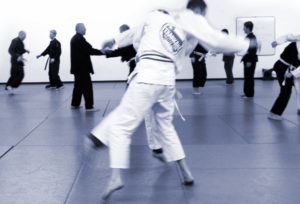The Combat Sports, MMA, Gracie Jiu Jitsu, and Jiu Jitsu in Texarkana
In order to be extraordinary, you must not follow the ordinary path.
It makes sense.
All Martial Arts Offer Some Benefit for It’s Practitioners.
The style that you choose should suit what you want to accomplish with training.
Different styles appeal to people for different reasons.
This post will talk about some of the training differences from a broad perspective to help people understand different training methods.
It is not meant to be this art or style is better than another art.
Gracie Jiu Jitsu
The Gracies developing a system of martial arts that was grappling based contrary to the common wisdom of the time that grappling didn’t work in a fight. This idea went on the revolutionize the martial arts, combat arts and sports. The Gracies were the founders of modern MMA and the UFC.
They used the UFC to show the world how well Brazilian Jiu Jitsu performed in a very close to no rules fight against other skilled martial artists.
One of the Gracies, Royce Gracie, went on to win 3 out of the first 4 UFCs.
Martial Art Styles
If you’re thinking about training for yourself or your child, many different styles exist… Karate (like Shotokan), Tae Kwon Do, Krav Maga, Judo, Wrestling, Brazilian Jiu Jitsu, Boxing, Kickboxing, Sambo, and other combat sports and martial arts.
By the way, I like to make this distinction in martial arts styles/systems.
You can break martial arts into two groups… the combat arts/sports and the ‘traditional‘ martial arts.
What’s the difference in these 2 Martial Arts categories?
Traditional Martial Arts
Traditional martial arts include tae kwon do, karate (like Shotokan karate and Kenpo karate), Japanese ju jitsu, Aikido, and others.
These martial arts are by in large a static system that was passed down through many years, often centuries.
These arts are generally a closed system of martial arts. The techniques do not generally change over time.
A large part of the practice in these styles consists of the practice of forms or kata. These are long sequences of movements that are memorized.
Presumably, the arts were taught that way because of limited written communication / reading. It was a way to pass on the techniques in this era.
They often incorporate weapons that were used centuries ago like the staff, nunchuks, or tonfa.
These arts do not typically spend much time in live drilling and sparring against a resisting opponent. It varies depending on the school.
The old school traditional arts tend to discourage much cross training in other arts, whereas some of the less traditional ones allow or at times encourage cross training. It depends on the art and the particular martial arts school/instructor.
Combat Martial Arts and Combat Sports
The combat arts include MMA, boxing, muay thai/kickboxing, judo, wrestling, sambo, and Brazilian Jiu Jitsu.
These arts are not static.
These arts tend to be an open system of arts that change over time as new things are learned and improved on.
These arts are based more upon performance, that is being able to use the movements against a resisting opponent that has counter intentions of their own.
You see these arts as the primary styles that work in Mixed Martial Arts competitions like the UFC.
This type of training follows the line of thinking that if you want to learn how to swim, you’ll have to get in the water.
The benefits to training in combat arts like Brazilian Jiu Jitsu is that participants develop…
- the ability to use what they learn in a more realistic scenario.
- improved fitness, endurance, and conditioning.
- improved focus because the participant remains attentive and present in practice and training.
- improved discipline in other areas of their life because participants want to perform better in their chosen sport and this causes them to evaluate if their lifestyle (habits, diet, exercise, …) will improve their performance or reduce it
- Gain much better control of their emotions because anger and other negative emotions will cause them to perform poorly during training (and competition)
- and the confidence that they can actually use the techniques against an attacker.
A very important added benefit to training in a grappling style like Brazilian Jiu Jitsu is that participants are able to train without the repetitive head trauma that often occurs in the striking arts.
As we learn more about concussions, this is something that many are rightfully concerned with both for adults and especially for kids.
Plus, as far as kids go, the kids learn how to handle a bully or an attacker without having to resort to punching or kicking them.
Kids in Brazilian Jiu Jitsu learn how to control their aggressor without injuring them. This is particularly important with modern school policies punshing both students involved in a fight, regardless if it was simply from one bullying another.
There is some cross over between the 2 camps of martial arts at times and different martial arts schools may lean a little more towards performance or kata type training regardless of style depending upon the instructor.
However, this is a good way to intellectualize the difference between the various martial arts.
Want To Try A Texarkana Jiu Jitsu Class?
Call Us: (903) 793-1085 Email Us: TexarkanaJiuJitsu@gmail.com